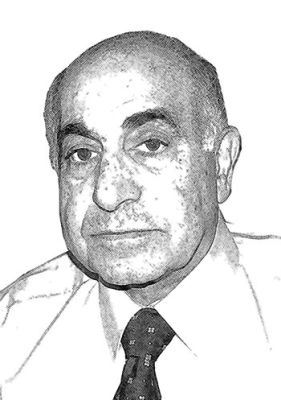Hamas, the Islamic Resistance Movement, has recently announced a revised political charter.
The original, 1988, Hamas charter included anti-Semitic language in targeting Jews as the enemy; linked itself to the much older Muslim Brotherhood organisation; committed to the destruction of the state of Israel and reclaiming the entire land of Palestine; denounced the Oslo accords and the so-called peace process altogether; disagreed with the PLO policy, as well as with the PA; and espoused armed resistance in pursuit of its goals.
As a result, Hamas has been shunned as an extremist movement.
Even when representatives of the movement won Palestinian elections a decade ago, it remained subject to international boycott and outright condemnation as a terrorist organisation.
When dubious efforts failed to topple the movement in its Gaza stronghold, Hamas was completely isolated while the entire Gaza Strip was placed under siege.
On top of massive hardships caused by the punitive siege, Gaza was three times under heavy Israeli military attack that caused enormous misery, destruction and death.
All along, and in order to end the deadlock, Hamas was required to meet conditions ordered by the Middle East Quartet (EU, US, Russia and the UN), which included renunciation of violence, acceptance of the Quartet’s roadmap for resolving the conflict and respecting all agreements signed between Israel and the PLO.
In simpler words, Hamas was required to adopt the same PA position that it has categorically rejected.
The revised charter, therefore, comes as a huge surprise because it does, in fact, address some of the international community’s concerns.
The new charter accepts the principle of a Palestinian state within the 1967 borders, but without recognising Israel (although de facto recognition is clearly implied); distances Hamas from the Muslim Brotherhood movement; hints at ending violence, depending on the viability of the political process; and declares that its struggle is not against the Jews but with the Zionist occupation, thus removing anti-Semitic language.
The move and the way Hamas leader Khaled Mishaal presented it, saying that the change had been under consideration for years, are positive, and a clear shift towards pragmatic political moderation.
If that is the main motive behind this drastic policy shift then it is perfectly proper.
But if Hamas hopes that the change will lead to reciprocal gestures from Israel, or from the international community, it will likely be very disappointed.
At best, Hamas’ will be asked to do more. Its step will be described as too little too late. Israel’s rejection of Hamas move was instant; it called it a bluff to deceive the world.
Judging from the pattern of circumstances to which the PLO was subjected during the last few decades, the revision of the charter would only mark the entry of the Islamic Resistance Movement into the same unending cycle of meeting a set of demands only to be served with another.
The PLO was first asked to accept Security Council Resolution 242. It did. Then it was required to renounce violence, which it did.
Following that it was required to recognise Israel; to condemn its own resistance as terrorism; to accept a Palestinian state on less than 22 per cent of Palestine; to compromise on the right of return of Palestinian refugees; to agree to allow Israel to keep most of its illegally built settlements on occupied Palestinian territory in return for some promised compensation elsewhere; to stop incitement against Israeli occupation; to revise the PLO charter; to cooperate with the occupation authority in security matters to protect the occupying forces from Palestinian resistance in lieu of the Israeli army; to prevent any sign of Palestinian protest against the Israeli occupiers; to submit to endless and sterile negotiations to shield irreversible facts Israel has been creating on the ground; and even to refrain from any action within the UN and its relevant agencies to seek justice for the Palestinian case peacefully and legally, within the rules of international law.
The Palestinians, the PLO and later the PA, did meet all the conditions and dictated demands correctly and
completely.
Regularly and diligently they kept complying with consecutive Israeli conditions as they were asked.
And what did the Palestinians get in return?
Absolutely nothing. Actually less than nothing, as their land has been steadily colonised and their rights are being largely compromised.
Israel does not run out of fresh conditions because the intention is not to establish the right terms for a final agreement. Rather, the Israeli scheme is to argue indefinitely until it completes its colonisation programme and renders any settlement on the basis of leaving occupied territories impossible.
The standing demand now is by far the most extreme.
After all the PA has done, it is now under pressure to recognise Israel, i.e., historical Palestine, as the land for the Jewish people, not just as a “Jewish state”.
With that condition met, the Palestinians would become themselves the occupiers, past and present.
They become the aggressors and the intruders on other people’s land and they have to compensate the Israeli “victims”.
Having stepped into this cycle, Hamas must prepare for sustained pressure, not only from Israel, but also from the international community, as well as for a steady supply of conditions and demands.
As was the case with the PLO and the PA, Hamas will not be rewarded for each positive step even with a kind word.
And as was the case with the PLO and the PA, Hamas will remain condemned on an endless trail to nowhere.
